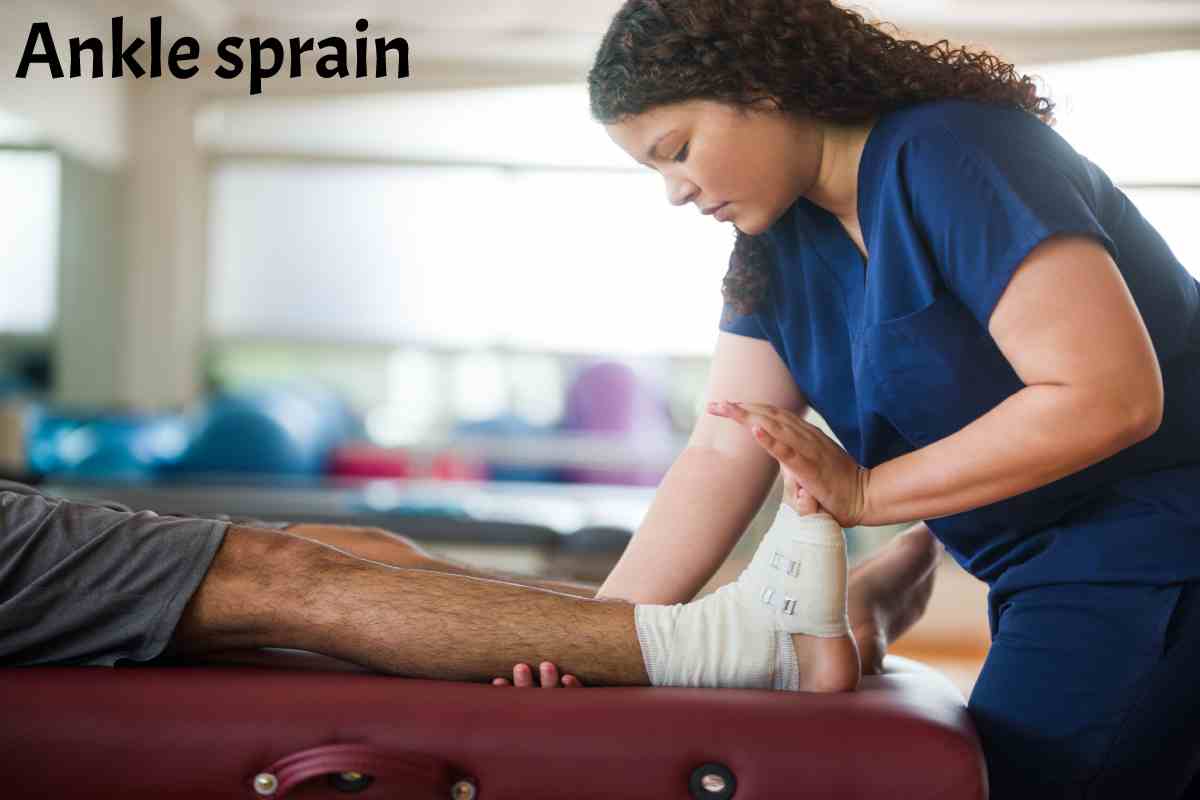Table of Contents
Ankle sprain
- Symptoms and causes
- Diagnosis and treatment
- Doctors and departments
- Impression
An Ankle Sprain Remains a Wound that Occurs When you Twist,
Twist or uncomfortably rotate your ankle. This can stretch or tear the rugged bands of tissue (ligaments) that help hold the ankle bones together.
Ligaments help stabilize joints, preventing excessive movement. An ankle sprain occurs when the ligaments remain forced beyond their normal range of motion. Most sprained ankles involve injuries to the ligaments on the outside of the ankle.
Treatment for a sprained ankle is contingent on the harshness of the injury. While self-care measures and over-the-counter pain relievers may be all you need, a medical evaluation may be necessary to reveal your sprained ankle’s severity and determine the appropriate treatment.
Symptoms
The signs and symptoms of a sprained ankle vary depending on the severity of the injury. They may include:
- Pain, especially when bearing weight on the pretentious foot
- Tenderness when touching the ankle
- Swelling
- bruises
- restricted range of motion
- ankle instability
- The sensation of popping or sound at the time of injury.
When to See a Doctor
Call your doctor if you have ankle pain and swelling and suspect a sprain. If your signs and symptoms are severe, you may have significant ligament damage or a broken bone in your ankle or lower leg. Self-care measures may remain all you need but talk to your doctor about whether your ankle should remain evaluated.
Register for free and stay up-to-date on current research advances, health tips, and health topics, such as COVID-19, as well as health management expertise.
A Fall that Reasons your Ankle to Twist
- Landing awkwardly on foot after jumping or turning
- Walking or exercising on an uneven surface
- Another person steps on or falls on your foot during a sports activity
- More information
- Ankle sprain
- Risk factor’s
Factors that Increase the Danger of an Ankle Sprain Include:
Sports participation. Ankle sprains are a common sports injury, especially in sports that need jumping, cutting, rolling, or twisting the foot, such as basketball, tennis, soccer, and trail running.
Uneven surfaces. Walking or running on rough surfaces or in poor field conditions can increase the risk of spraining your ankle.
Previous ankle injury. When you’ve sprained your ankle or had another type of ankle injury, you’re more likely to sprain it again.
Poor physical condition. Poor ankle strength or flexibility can increase the risk of a sprain when participating in sports.
Inappropriate shoes. Shoes that don’t fit well or aren’t appropriate for activity and heels, in general, make your ankles more vulnerable to injury.
The Following Instructions can Help you Prevent a Sprained Ankle or a Recurrent Sprain:
- Warm up before exercising or playing sports.
- Take care when walking, running, or working on an uneven surface.
- Wear an ankle brace or tape a weak or previously injured ankle.
- Wear shoes that fit well and remain made for your activity.
- Minimize the use of high-heeled shoes.
- Do not play athletics or participate in activities for which you are not prepared.
- Maintain good muscle strength and flexibility.
- Practice stability training, including balance exercises.
Conclusion
Avoid activities that cause pain, swelling or discomfort. Ice. Use an ice pack or ice slush bath immediately for 15 to 20 minutes and repeat every two to three hours while you’re awake. If you have vascular disease, diabetes or decreased sensation, talk with your doctor before applying ice.
Also read: Copper Braiding Hair

